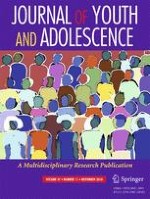16-08-2018 | Empirical Research
Depressive Symptomology as a Moderator of Friend Selection and Influence on Substance Use Involvement: Estimates from Grades 6 to 12 in Six Longitudinal School-Based Social Networks
Gepubliceerd in: Journal of Youth and Adolescence | Uitgave 11/2018
Log in om toegang te krijgenAbstract
Although the contributions of friend selection and friend influence to adolescent homophily on substance use behaviors has been of enduring research interest, moderators of these processes have received relatively little research attention. Identification of factors that dampen or amplify selection and influence on substance use behaviors is important for informing prevention efforts. Whereas prior research has examined adolescent drinking, smoking, and marijuana use, the current study examined whether friend selection and friend influence operated on substance use involvement, an indicator of problematic use, and whether depressive symptomology moderated these processes. In addition, it examined whether these relationships varied from grade 6 to 12. The study used a cohort-sequential design in which three cohorts of youth (first surveyed in grades, 6, 7, and 8) in six school-based longitudinal social networks were surveyed up to seven times, yielding N = 6817 adolescents (49% female). Stochastic actor-oriented models were applied to test hypothesized relationships in the six networks, then results were synthesized in a meta-analysis. Depressive symptoms did not moderate selection or influence on substance use involvement at any grade level, but indirectly contributed to diffusion of substance use involvement through school networks via patterns of network ties. Research is needed on contextual factors, particularly in schools, that might account for when, if at all, depressive symptoms condition friend selection and influence on substance use.
